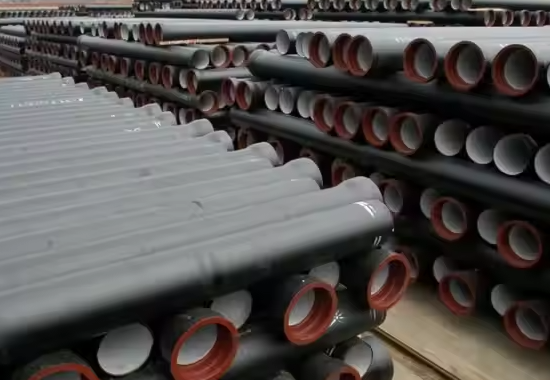All metals can be classified into ferrous and non-ferrous categories based on their iron content. Ferrous metals contain significant amounts of iron, giving them magnetic properties and high tensile strength, whereas non-ferrous metals are iron-free, offering superior corrosion resistance and lighter weight. Understanding this distinction is crucial for material selection in engineering and manufacturing.

What Is Ductile Iron?
Ductile iron is a cast iron variant characterized by spheroidal graphite inclusions, which impart exceptional ductility and toughness compared to gray cast iron.
Its typical chemical composition includes 3.0–4.0% carbon and 1.8–3.0% silicon, along with small percentages of manganese, phosphorus, and sulfur.
Mechanical properties of ductile iron often range from 400 to 550 MPa in ultimate tensile strength, with elongation values between 2% and 18% depending on grade.
Ferrous vs Non-Ferrous Metals
Ferrous Metals
-
Contain Iron: Primary constituent is iron, typically over 60% of mass.
-
Magnetic: Exhibit magnetic properties due to iron content.
-
High Strength: Superior tensile strength, suited for structural applications.
-
Prone to Corrosion: Require coatings or alloys to resist rust.
Non-Ferrous Metals
-
Iron-Free: Negligible iron content (often <0.5%), e.g., aluminum, copper, zinc.
-
Non-Magnetic: Generally not attracted by magnets.
-
Lightweight & Corrosion-Resistant: Ideal for marine and electrical uses.
-
Lower Tensile Strength: Relative to steels and irons.
Is Ductile Iron Ferrous or Non-Ferrous?
Ductile iron is classified as a ferrous metal:
-
It contains a high proportion of iron in its matrix.
-
It exhibits magnetic behavior typical of iron-based alloys.
Property Comparison Table
| Property | Ductile Iron (Ferrous) | Aluminum 6061 (Non-Ferrous) |
|---|---|---|
| Iron Content | > 90 % by mass | < 0.1 % (iron impurity) |
| Density (g/cm³) | ~ 7.0 | ~ 2.71 |
| Ultimate Tensile Strength (MPa) | 400–550 | ≥ 290 (6061-T6) |
| Elongation at Break (%) | 2–18 % | 8–10 % |
| Corrosion Resistance | Moderate (needs protection) | High (natural oxide layer) |
| Magnetic? | Yes | No |
| Common Applications | Pipes, automotive parts, machinery | Aerospace, marine, electronics |
Frequently Asked Questions (FAQ)
Q1: Is ductile iron a ferrous metal?
A1: Yes, ductile iron is ferrous because it contains a high percentage of iron and behaves magnetically.
Q2: What gives ductile iron its ductility?
A2: The nodular (spheroidal) shape of graphite inclusions reduces stress concentrations, allowing more deformation before fracture.
Q3: How does ductile iron differ from gray iron?
A3: Gray iron has flake-like graphite, making it brittle, whereas ductile iron’s spherical graphite yields higher toughness and ductility.
Q4: Are all ferrous metals magnetic?
A4: Most ferrous metals are magnetic due to their iron content, though some stainless steels may be weakly magnetic or non-magnetic depending on crystalline structure.
Q5: Why choose non-ferrous metals over ferrous ones?
A5: Non-ferrous metals offer superior corrosion resistance, lower weight, and non-magnetic properties, making them suitable for specialized applications like aerospace and electronics.
